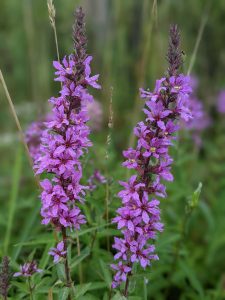The 4th annual Invasive Species Action Week is scheduled for May 12th to May 18th this year. Coordinated by the Canadian Council on Invasive Species (CCIS), the week is dedicated to taking action on the serious threat posed by invasive species. Species that are quietly encroaching on our natural environment coast to coast to coast. An invasive species is considered to be a non-native, alien species that causes harm to its introduced (adopted) environment. These infiltrators typically reproduce aggressively and their predatory behavior often overwhelm native species, reducing critical biodiversity. Just think phragmites!
The ‘Invasive Species Action’ week encourages Canadians to focus on actions to protect landscapes, waterways and Canadian communities from the further spread of non-native species in our eco-systems. The week builds on the ‘Invasive Species Awareness Week’ held earlier this year during March.
Here to share more about Invasive Species and why it’s critical that we become aware and take action to  eliminate them and their spread is Sustainable Orillia’s own Matt Thomson, the sector chair for our Natural Environment Sector.
eliminate them and their spread is Sustainable Orillia’s own Matt Thomson, the sector chair for our Natural Environment Sector.
________________________________
“Invasive alien species are found among fish, invertebrates, pathogens, terrestrial & aquatic plants, insects and wildlife. They can cause damage to our trees, reduce shade canopies and habitat for birds, bats and a long list of other living things while creating a ripple effect across food chains in the natural world. They can impact our waterways by reducing safe boat navigation; clogging propellers and creating undesirable swimming conditions. They can impact crop yields and require expensive herbicide & pesticide treatments that drive up the affordability of certain foods. Overall, the economic impact can be massive; however, in many cases, these alien invaders go unnoticed and unaddressed until it’s (almost) too late.
From a global perspective, according to the Intergovernmental Science-Policy Platform on Biodiversity and Ecosystems Services [IPBES] there are around 37,000 alien species recorded and about 5,300 of those are considered invasive. As these numbers show, some introduced alien species don’t pose a threat to local ecosystems; appropriately our focus is on the ones that do.
In 2019 alone, it was estimated that these biological invasions world-wide had cost more than $423 billion (this is before inflation worsened). Keep in mind this staggering dollar figure doesn’t account for the management of these invasive species and overall, it’s a ‘drop in the bucket’ compared to the economic losses incurred by the cost of inaction. Early detection is critical to help minimize the damage to our biodiversity and the cost of ridding ourselves of these unwanted species.
Many of these species are introduced unintentionally through the vast network of global trade imports &  exports with weak measures in place to protect against entry into a country. They can hitch a ride on a cargo ship (Zebra mussels) or get caught up in the logistics of transporting a palette of goods (Spotted Lanternfly). Sadly, some are introduced intentionally by humans, through various tourism activities such as bait fishing (Rusty Crayfish) (Note: It’s important to purchase your fishing bait locally where you fish.) or when we purchase colourful, exotic species for our aquariums & terrariums and then realize they’re not what we expected. The most dangerous thing we can do is release these unwanted pets outdoors.
exports with weak measures in place to protect against entry into a country. They can hitch a ride on a cargo ship (Zebra mussels) or get caught up in the logistics of transporting a palette of goods (Spotted Lanternfly). Sadly, some are introduced intentionally by humans, through various tourism activities such as bait fishing (Rusty Crayfish) (Note: It’s important to purchase your fishing bait locally where you fish.) or when we purchase colourful, exotic species for our aquariums & terrariums and then realize they’re not what we expected. The most dangerous thing we can do is release these unwanted pets outdoors.
The question is, how do we deal with these invaders that are threatening the biodiversity in our yards and beyond? The first task is to determine what invasive species may be present on your property. It could be the more dominant species in your yard and may appear in large groupings. Or it could appear as a dying tree with unusual insects hanging around. You may want to seek advice from a local expert like a horticulturist or ecologist. Don’t hesitate to use online platforms to help you get the answers you need. Removal methods can vary and depending on the invader may require extreme caution. Eliminating invasive species requires commitment as are most plant removals. Best to do it in stages. Similar to picking up roadside trash, an hour or two each time can make a huge impact.
A plan for management may take multiple years. Don’t be discouraged if these invasive species return the following year because persistence is a key characteristic of these species and a key requisite to getting rid of them. To learn more about invasive species and best management practices, be sure to visit https://www.invasivespeciescentre.ca/ or Ontario Federation of Anglers & Hunters website, https://www.invadingspecies.com/ “
– 30 –

